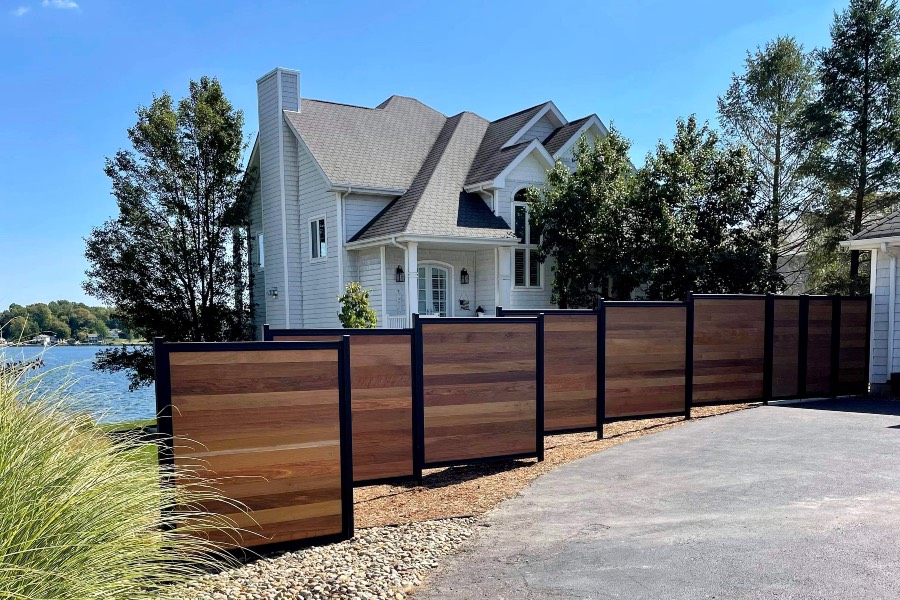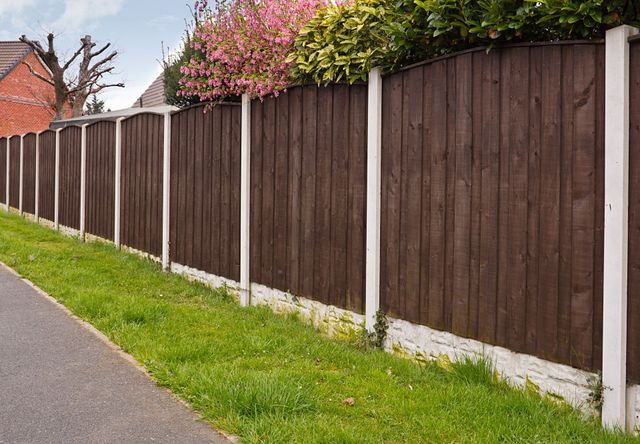All Categories
Featured

Fencings are an essential part of your residential property, using privacy, protection, and visual value. They are constantly subjected to the aspects and can endure from weather-related damages over time. Whether it's strong winds, rainfall, snow, or extreme warm, weather condition conditions can gradually deteriorate your fencing, bring about pricey repair services or substitute. There are numerous actions you can take to secure your fencing from weather-related damages and expand its life expectancy. Here's exactly how you can safeguard your fence versus the components.
- Pick the Right Material. The kind of material your fence is made from plays a considerable function in just how well it will certainly hold up against weather problems. Some materials are naturally more immune to damage than others. :
Wooden Fences: While traditional and beautiful, wood can be vulnerable to moisture, rot, and bugs. Pressure-treated timber or cedar can supply much better resistance to these issues. Plastic Fences: Vinyl is very immune to dampness, rot, and parasites. It also stands well to rough sun and hefty rain. Metal Fences: Wrought iron or light weight aluminum fencings are resilient and can stand up to a variety of weather condition problems. They can, nonetheless, deal with corrosion with time, especially if not appropriately coated. Compound Fences: Made from a mixture of wood fibers and plastic, composite fences are more immune to weather-related damages contrasted to typical timber fences. Picking the appropriate material for your area's environment is the primary step in protecting your fencing from climate damages.
- Seal or Stain Wooden Fences. Wood fences are specifically susceptible to harm from wetness, UV rays, and temperature level fluctuations. One of the most efficient methods to safeguard your timber fencing is by applying a protective sealer or stain. These products aid:
Avoid Water Damages: Sealers develop a waterproof obstacle, avoiding moisture from leaking right into the timber and triggering mold, mold, or rot. Protect Versus UV Damage: An excellent stain or sealer will certainly also obstruct damaging UV rays from the sunlight, which can trigger wood to dry out, split, and blemish in time. Protect the Fence's Look: Regular staining assists keep the natural charm of the timber and expands its lifespan. It's suggested to reapply the discolor or sealant every 1-- 2 years to maintain your fence good problem.
- Install an Obstacle for Wind Security. Solid winds can trigger considerable damages to your fencing, particularly if it is tall or weak. Wind can flex or damage wooden panels, loosen fence posts, or perhaps trigger the whole fence to collapse. Setting up a windbreak-- such as planting shrubs, hedges, or setting up a mesh obstacle-- can help shield your fencing from high winds.
Furthermore, you can strengthen the articles with concrete or metal braces to offer added security and prevent leaning or moving.
- Trim Overhanging Branches. Dropping branches can damage panels or damage the fence blog posts, leading to costly repair services. Maintaining the branches cut back reduces the danger of branches damaging off and triggering damage to the fencing.
- Routine Assessments and Upkeep. Doing normal maintenance and inspections is vital to capturing potential troubles before they escalate. After a heavy storm, evaluate your fence for any type of signs of damages, such as loose panels, leaning blog posts, or broken sections. Caring for little issues before they come to be larger ones can assist extend the life of your fence.
Furthermore, cleaning your fencing occasionally to remove mold, dust, or debris can aid protect its look and integrity. For wooden fencings, delicately stress wash the surface area to remove built-up gunk, and for vinyl fences, make use of a mild detergent to clean up any discolorations.

- Make Certain Proper Drain. Water damages is among one of the most common weather-related concerns that influence fencings. Poor drainage can bring about standing water around your fencing articles, which can create the posts to rot or deteriorate in time. To avoid this, ensure the ground around your fencing slopes away from the blog posts. You may likewise desire to mount drainage services such as French drains pipes or gravel at the base of the blog posts to stop water from merging.
- Use a Safety Covering to Steel Fences. Metal fencings, such as those constructed from iron or steel, are extremely resilient but can be susceptible to rust if not correctly preserved. Applying a protective covering or paint that is particularly made for metal can aid prevent corrosion and corrosion. Make certain to inspect the fencing occasionally for any type of signs of corrosion, and address it immediately by sanding and repainting the impacted areas.

Conclusion. Your fence is a useful investment, and securing it from weather-related damages will help make sure that it continues to offer its function for many years to come. By selecting the best materials, consistently keeping your fencing, and taking actions to protect it from the aspects, you can lessen weather-related damages and expand its lifespan. Whether you're taking care of strong winds, hefty rainfall, or the harsh sunlight, these basic steps can go a lengthy means in protecting the condition and appearance of your fence, conserving you money and time over time.
Latest Posts
Experience Your Financial Partner at WyHy – Financial Freedom for Your Future
Published May 25, 25
1 min read
Explore Budget-Friendly Auto Repairs with Montclare’s Exclusive Service Specials
Published May 23, 25
1 min read
Find Out Reduce Expenses on Car Maintenance with Montclare Auto Repair’s Limited-Time Deals
Published May 23, 25
1 min read
More
Latest Posts
Experience Your Financial Partner at WyHy – Financial Freedom for Your Future
Published May 25, 25
1 min read
Explore Budget-Friendly Auto Repairs with Montclare’s Exclusive Service Specials
Published May 23, 25
1 min read
Find Out Reduce Expenses on Car Maintenance with Montclare Auto Repair’s Limited-Time Deals
Published May 23, 25
1 min read